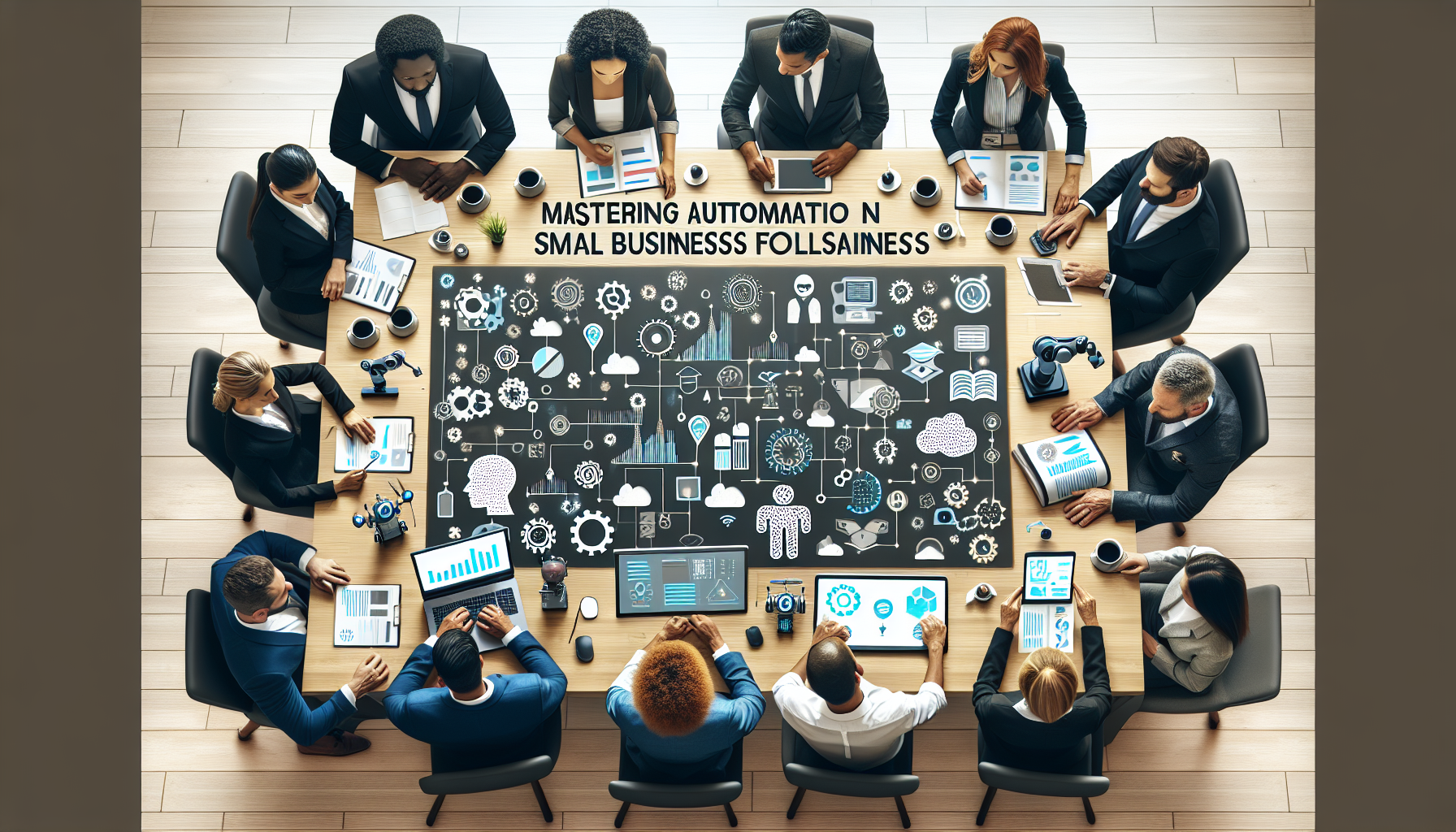Understanding Automation in Small Businesses
Automation refers to the use of technology to perform tasks with minimal human intervention. For small businesses, mastering automation can streamline operations, reduce costs, and improve efficiency. However, it’s essential to understand where and how to implement these technologies effectively.
Identify the Right Processes for Automation
-
Evaluate Daily Operations
Begin by assessing which tasks consume significant time and resources. Common candidates for automation include data entry, email marketing, social media posting, customer relationship management (CRM), and inventory management. -
Consider High-Volume Tasks
Focus on repetitive, high-frequency tasks that can benefit the most from automation. For instance, if your business handles a large volume of customer inquiries, consider deploying chatbots or automated email responses. -
Assess Complexity vs. Simplicity
Not all tasks lend themselves well to automation. Ensure that the processes you choose maintain quality and consistency even when automated. Simple, rule-based tasks are often ideal.
Choosing the Right Tools
-
Research Automation Software
Explore various automation tools available, such as Zapier for integrating different applications, Hootsuite for social media scheduling, or Mailchimp for email marketing. Selecting the right software is crucial for seamless integration into existing workflows. -
User-Friendly Interface
Prioritize tools with intuitive interfaces. Since small business owners often juggle multiple tasks, a user-friendly automation tool can save time and reduce the learning curve. -
Scalability
Choose software that can grow with your business. A tool that works well for your current size should also accommodate future growth without requiring a complete overhaul of your systems.
Implementation Strategy
-
Set Clear Objectives
Define specific goals for what you want to achieve through automation. Whether it’s to reduce manual work by 50% or increase customer engagement by a certain percentage, clear objectives guide your automation strategy. -
Develop a Step-by-Step Plan
Implement automation gradually rather than all at once to minimize potential disruptions. Start with one area, assess its impact, and then expand to other tasks. -
Train Your Team
Include your employees in the transition. Ensure they understand how new tools work and how automated processes will impact their roles. Proper training enhances software adoption and promotes a smoother transition.
Monitoring and Adjusting Automated Systems
-
Continuous Evaluation
Regularly review automated processes to identify areas for improvement. Solicit feedback from team members to assess the effectiveness of the automation. -
Analytics and Reporting
Leverage analytics to measure the performance of automated tasks. Key metrics might include response times, conversion rates, and customer satisfaction levels. -
Stay Flexible
Be prepared to tweak your automation processes as needed. Technology and market conditions change, and your automation strategy should be adaptable.
Cost Considerations
-
Budget Wisely
Investing in automation tools should align with your budget. Consider both upfront costs and ongoing subscription fees. -
Calculate ROI
To ensure worthwhile investment, calculate the return on investment for automation tools. Assess whether the time saved and effectiveness gained outweigh the initial costs. -
Prioritize Return Over Expense
Rather than simply opting for the cheapest solution, consider the value provided by a more robust tool that may require a higher upfront cost but offers significant long-term savings.
Addressing Common Concerns
-
Fear of Job Loss
One prevailing concern is that automation will replace jobs. Reassure your team that automation is intended to handle mundane aspects of their roles, allowing them to focus on higher-value tasks that require human creativity and empathy. -
Security Issues
Automating tasks can raise concerns about data security. Ensure that any tools you choose adhere to industry-standard security measures and review their data protection policies. -
Technical Challenges
New tools may bring technical difficulties. Steer clear of overly complex systems that can lead to frustration. Opt for solutions with robust customer support and user communities.
Leveraging Automation for Customer Engagement
-
Personalized Marketing Strategies
Utilize automation for personalized emails and marketing campaigns. Tools can segment your audience based on behavior or demographics, allowing for targeted messaging. -
Improving Customer Service
Implement automated customer service solutions like chatbots that provide instant responses to inquiries. This not only increases satisfaction rates but also frees up staff for more complex customer needs. -
Enhanced Feedback Loops
Automation can facilitate gathering feedback through surveys and follow-up emails. Understanding customer opinions helps refine your offerings and improve retention rates.
The Future of Automation for Small Business
-
AI and Machine Learning
Embrace advancements in artificial intelligence and machine learning, which can automate more complex decision-making processes. Staying ahead of trends ensures your business remains competitive. -
Integration of Emerging Technologies
Explore how technologies such as virtual reality (VR) and augmented reality (AR) may reshape customer interactions. Early adoption can set your business apart in your industry. -
Focus on Sustainability
As automation improves efficiency, consider how it can also lead to more sustainable practices. For example, automating resource management could reduce waste and enhance your brand’s environmental responsibility.
Concluding Points
Mastering automation is a transformative journey for small business owners. Fostering a culture that embraces technology, prioritizing customer experience, and keeping an eye on industry trends will be vital in leveraging automation for long-term success.


